Bosa, along with Castelsardo in Sardinia, ranks among the most beautiful villages in Italy.
Since both are located in the northwest of Sardinia, where we were also on a short vacation in Alghero, relatively close to both, we decided to make our trip from Alghero to Bosa. Why?
Because it was easier; there was a direct bus to Bosa, taking only an hour to cover (32 km south) compared to three hours it would have taken to get to Castelsardo (52 km towards the northeast) and the obligatory bus change in Sassari. So, it was decided: Bosa it is!
Read also:
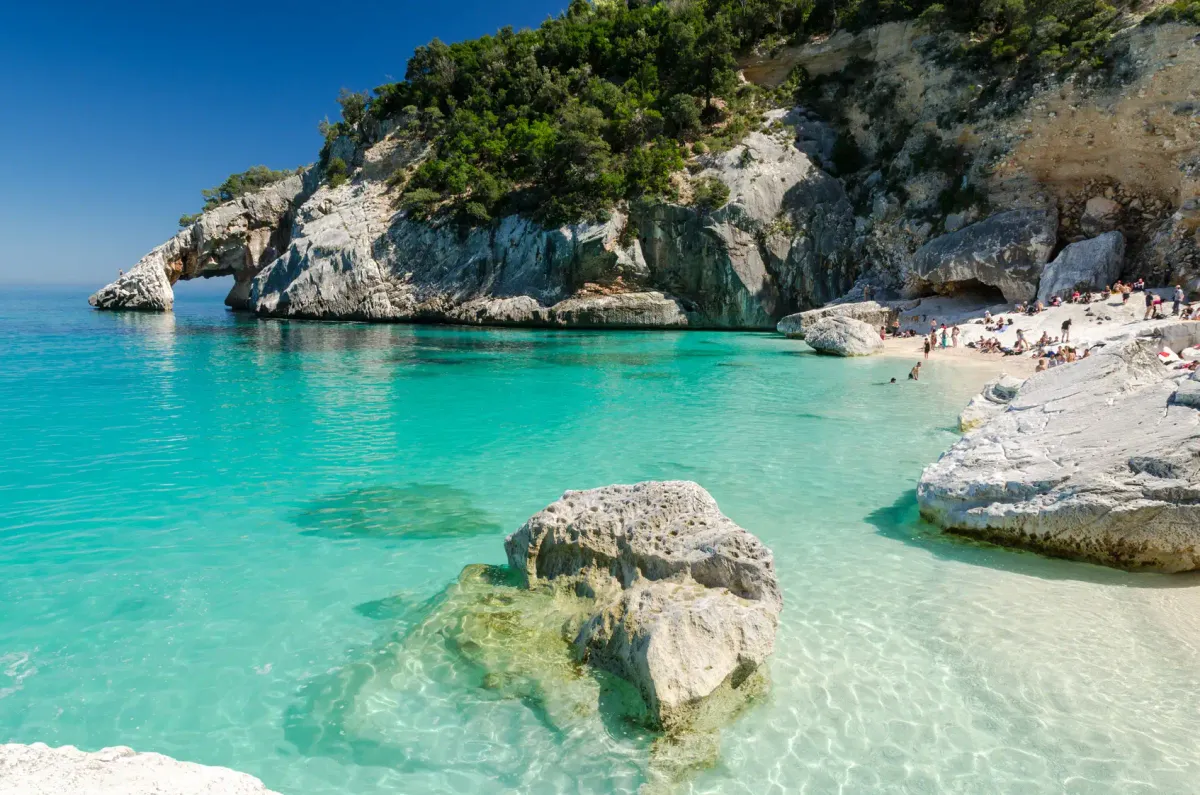
In the afternoon of the first day of vacation, we stopped by the info point in Alghero, located near the small bus station in front of Giardini Manno park.
At the departure platform for Bosa, I read that the next day there was only one departure bus, at 09:30, and from there, just one return bus, at 17:00.
The schedule was excellent, so on Sunday morning, we bought round-trip tickets from the machine in front of the nearby newspaper kiosk with a card: €7.40 per person.
The trip to Bosa took an hour, on the coastal road that winds along the rocky shore and passes through the green hills at elevation, where the view towards the sea is spectacular.
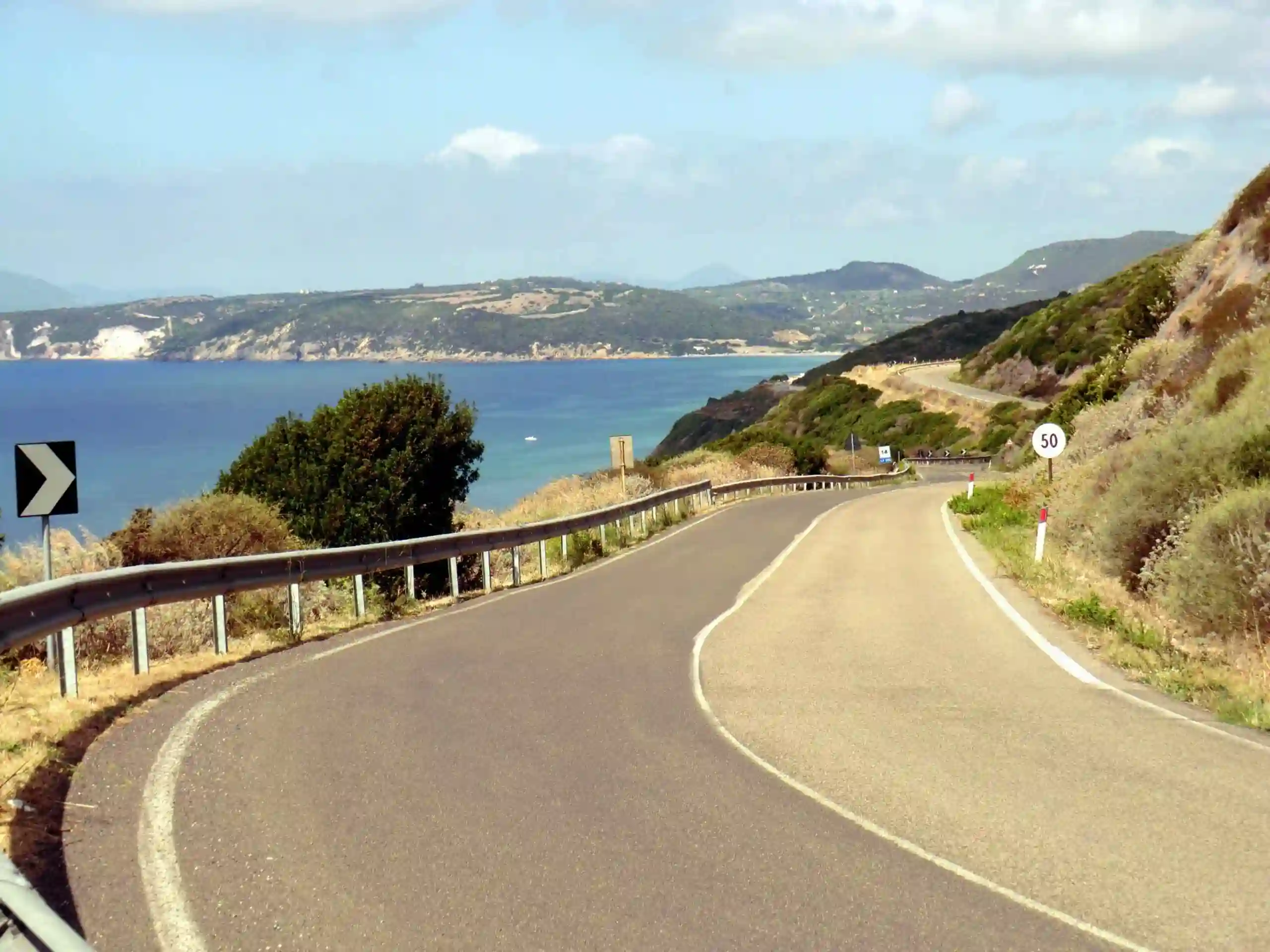
You can see promontories, sometimes beaches are visible down at the shore, and in places, the road has lookout spots, interesting only for those with a rented car, as our driver, having no stops along the route, played the guide from time to time pointing out notable points and showing us at one point above Capo Marrargiu, griffon vultures in flight, proud that here lives the largest colony in Italy of these rare birds.
We got off at Piazza Gioberti, the terminus of the route, but also a kind of center of the locality, and the driver made sure to tell us that it was from there we would be picked up in the afternoon, but to not be late as he couldn’t wait for us. After that, we were free to roam!
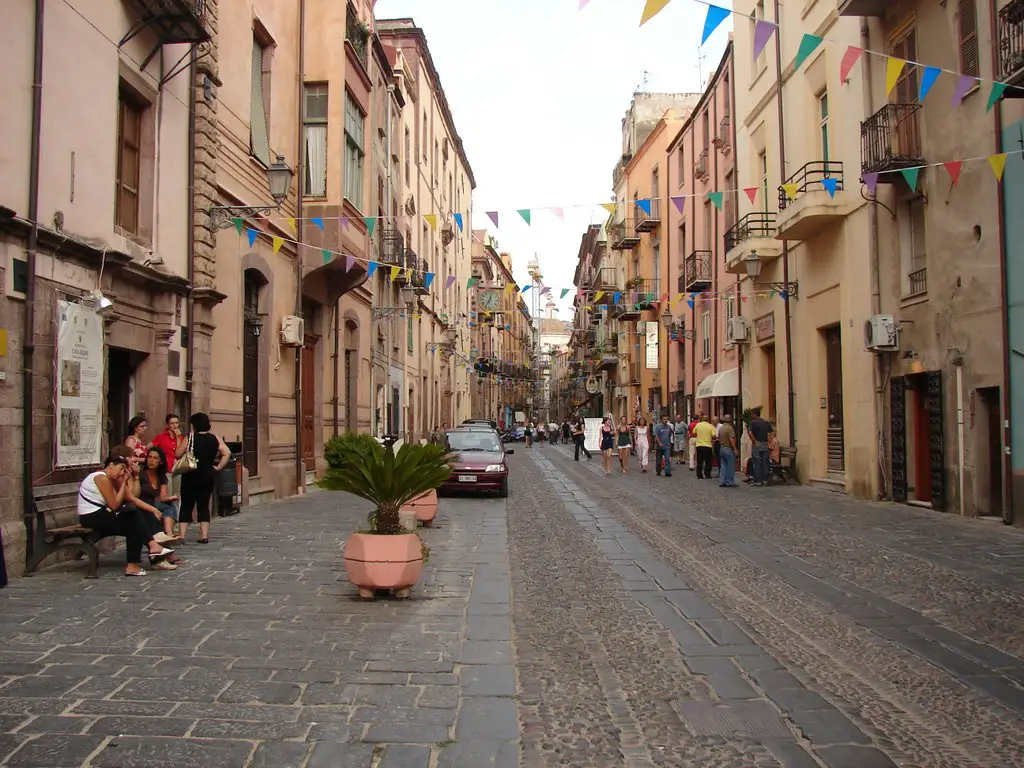
Few Words About Bosa
Bosa, the city of colors, as it defines itself due to its brightly painted houses, is a Sardinian town in the Oristano province located at the mouth of the Temo river into the sea, which is the only navigable river on the island.
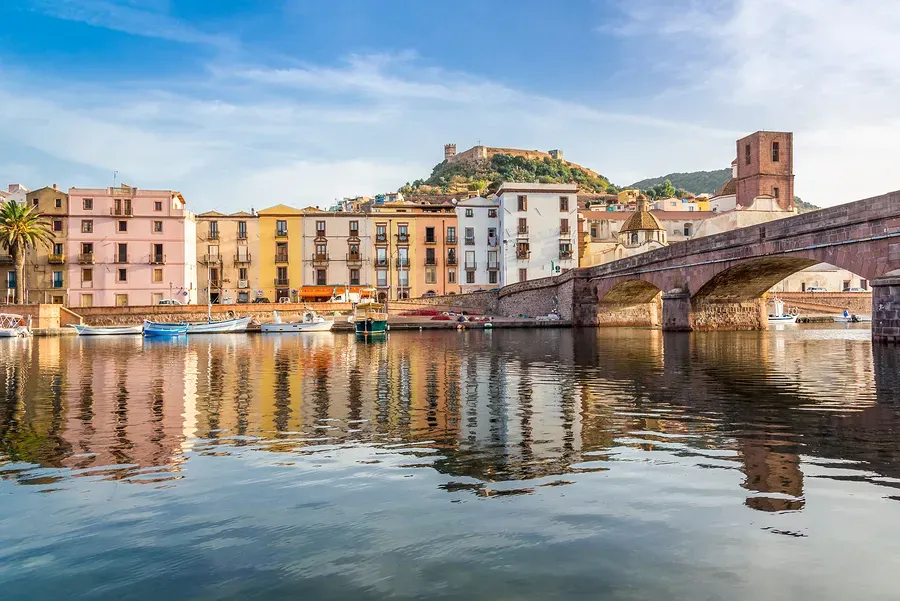
Surrounded on the other sides by mountains, Bosa seems quite isolated, but its opening towards the sea gives it the advantage of having a generous Marina as well as a beach on the other side, the one facing the sea, and also specific fortifications: defensive walls, a tower, a lighthouse.
Bosa has about eight thousand permanent residents, to which tourists are added in the summer season, who choose to spend their holiday in the bucolic tranquility of this place.
From a historical perspective, it can be said that it had a destiny similar to that of the city of Alghero, being founded by the Genoese, more precisely by a wealthy family named Malaspina, in the 12th century (year 1112) when the construction of a castle on top of the Seravalle hill began, which was to serve as the nucleus of the community in the sense that residents often took shelter under its walls to escape pirate attacks.
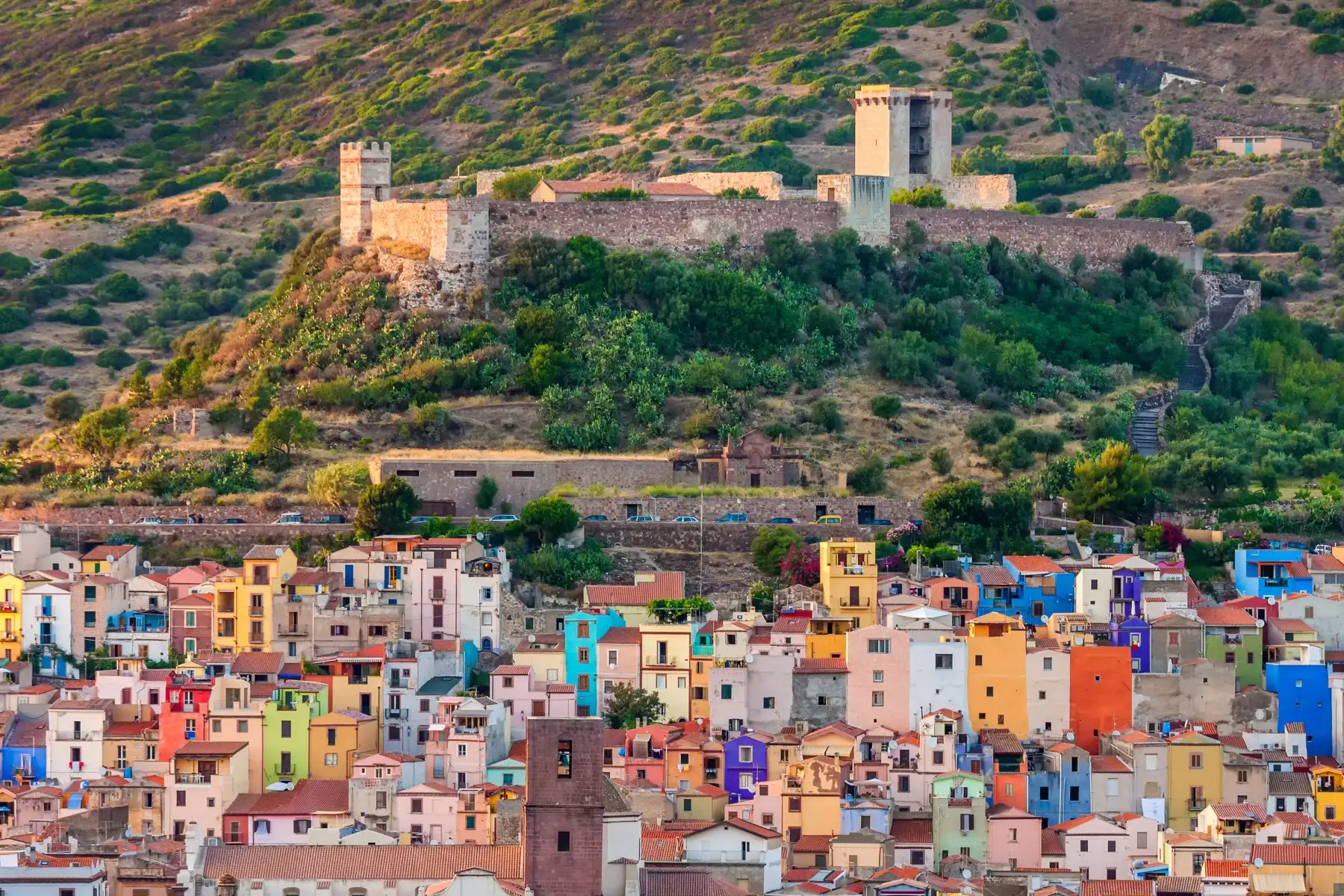
Indeed, the entire settlement seems to be arranged to protect the castle, laid out concentrically in steps down to its base.
Later, from the 14th century, Bosa also became part of the Crown of Aragon, and then returned to the House of Savoy.
The area is renowned for its production of wine and olive oil, with a type of wine, called Malvasia di Bosa, being the undisputed star, amber-colored, sweet, and strong enough to be consumed as a digestive.
Discovering Bosa on Foot
After I did some research on what we could do in Bosa, so we wouldn’t be wandering blindly, I understood that the Castello Malaspina di Fosdinovo, located on the top of a hill overseeing the town, deserved attention.
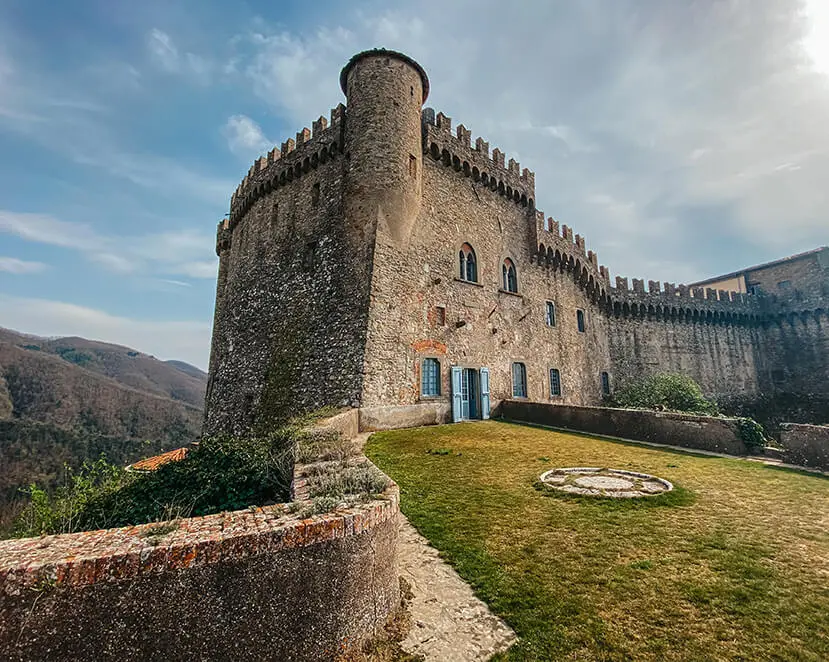
Also of interest were the Sa Costa neighborhood at the foot of the hill, a labyrinth of alleyways and picturesque houses; the Sas Conzas quarter situated on the left bank of the Temo River; and Bosa Marina, located near the mouth of the Temo River into the sea, about two kilometers away, developed as a seaside resort with a beach and also a river port.
Since we were relatively close to the castle, we decided to start there, thinking the climb would be easier when we were rested and full of energy, especially since we would be going up the winding lanes of Sa Costa, then admiring the Ponte Vecchio, taking a look towards the Sas Conzas quarter, before heading out onto the Lungo Temo Alcide de Gasperi promenade, moving straight towards Bosa Marina.
The weather had improved, with the sun coming out from behind the black clouds that threatened heavy rain, but we hoped it would dissipate or at least bypass us.
From Piazza Vincenzo Gioberto, we targeted the massive fortress at the top, visible from the entrance to the town, and followed the directional arrows showing us the way.
First, we arrived at Piazza del Carmine, where we were greeted by the baroque façade of the Chiesa della Beata Vergine del Carmelo, which we found open and entered for a bit.
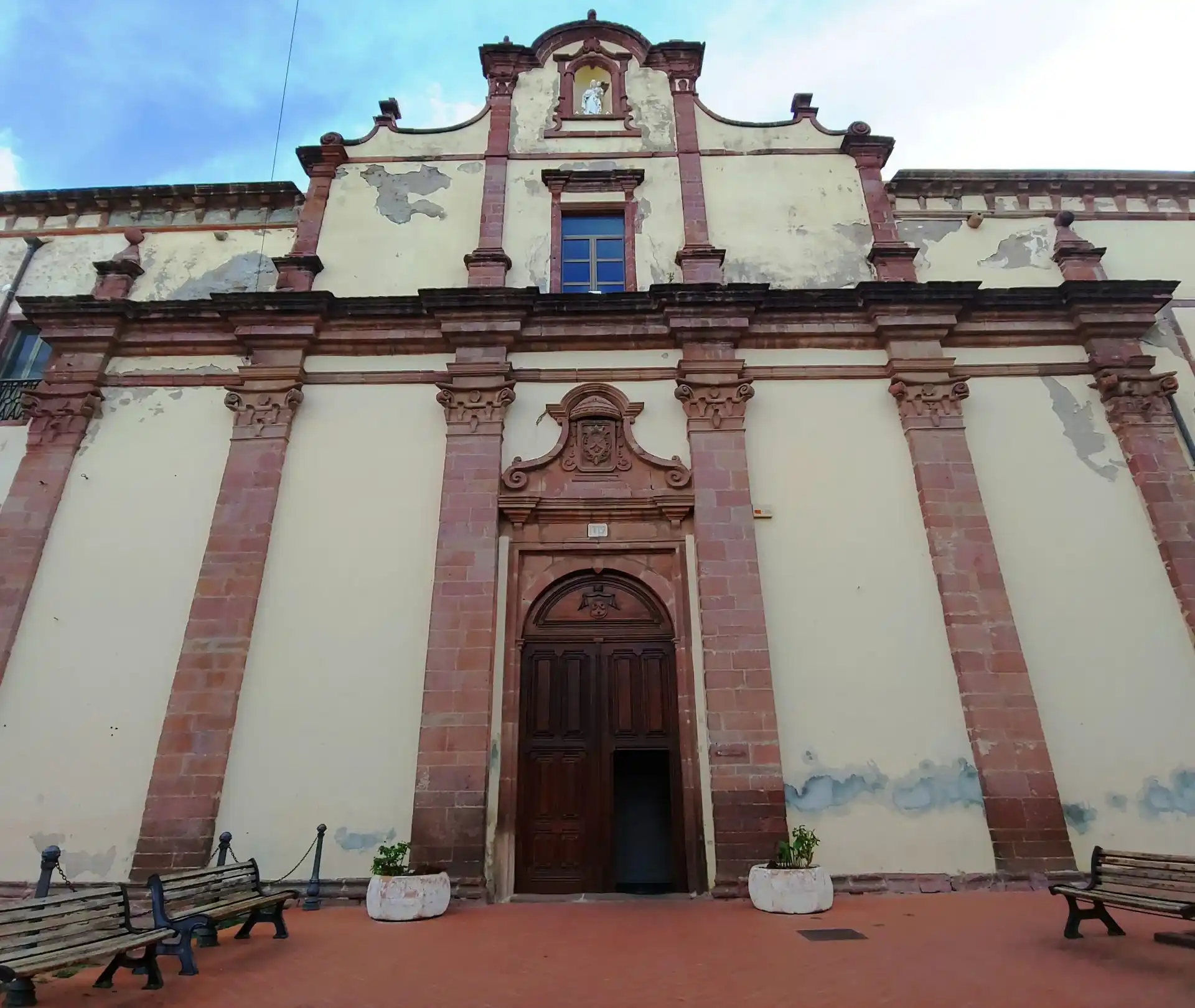
We began to climb some narrow streets with old, but brightly colored houses, adorned with flower pots, among which we timidly spotted bougainvillea here and there.
The vibrant colors kept our attention high, and after winding through streets, houses, and flowers, we found ourselves on Via Belvedere, which skirts the castle like a belt and from where the view over Bosa, the Temo river, all the way to the sea, is absolutely stunning.
We headed towards the entrance and, despite the fact that it was supposed to be open according to the schedule, the gate was closed.
There was also a phone number posted to call in cases like ours, but no one answered, so we had to be content with the pictures from above, which were not bad at all, on the contrary.
We knew that not much had been preserved from the fortress, except for the walls and towers that remained almost intact, and inside there would have been a small church to see, Nostra Signora Regnos Altos, from the 14th-15th centuries, which houses a remarkable collection of frescoes from that period.
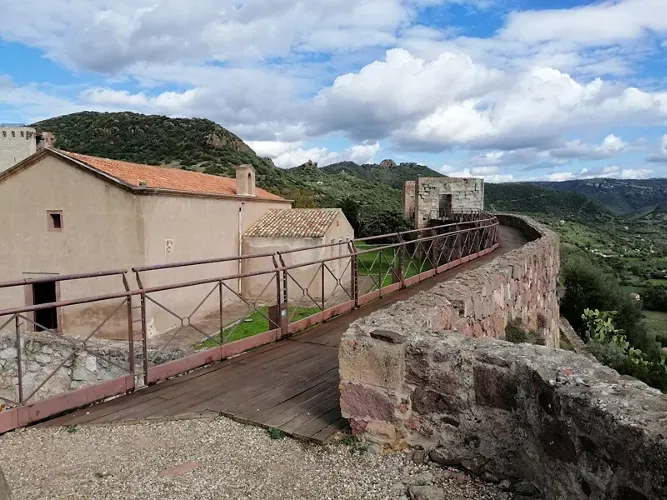
We left the castle, descending other picturesque streets of Sa Costa with the intention of reaching the Cathedral (Cattedrale dell’Immacolata) on Corso Vittorio Emanuele II.
The cathedral is located on the northern bank of the Temo river, near the historic bridge, Ponte Vecchio, and dates from the 15th century, with an exterior designed in the late Baroque period.
Its beautiful dome is covered in multicolored majolica tiles. We went inside and listened to the service for a while, but since the cathedral was undergoing renovation, we couldn’t admire it much from the inside.
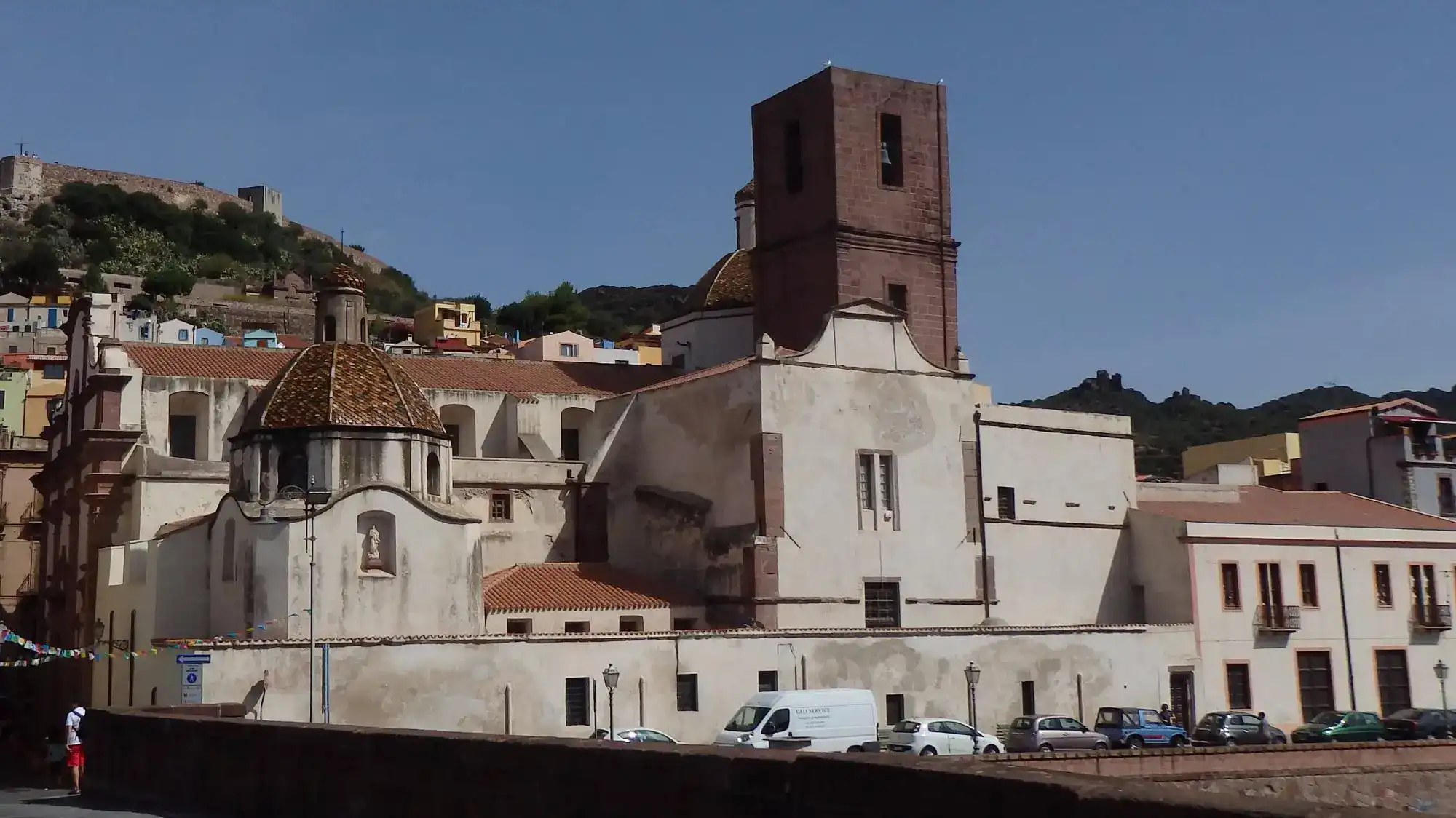
Exiting, we were greeted by Ponte Vecchio, an “antiquity” with three medieval arches, undeniably charming and still perfectly usable for cars today.
On the other side of the Temo river, on its left bank, stretched the Sas Conzas neighborhood where the tanneries were located, Bosa being famous a few centuries ago for the leather produced here.
Of course, the place was also known for the unpleasant smells emitted from this activity. The old tanneries, a complex of no longer used, quite degraded buildings, have been recovered and subjected to measures intended to preserve them in good condition, later creating a museum to highlight their value.
We planned to head to Bosa Marina, for which we set off on foot along the Lungo Temo Alcide de Gasperi promenade for about two kilometers.
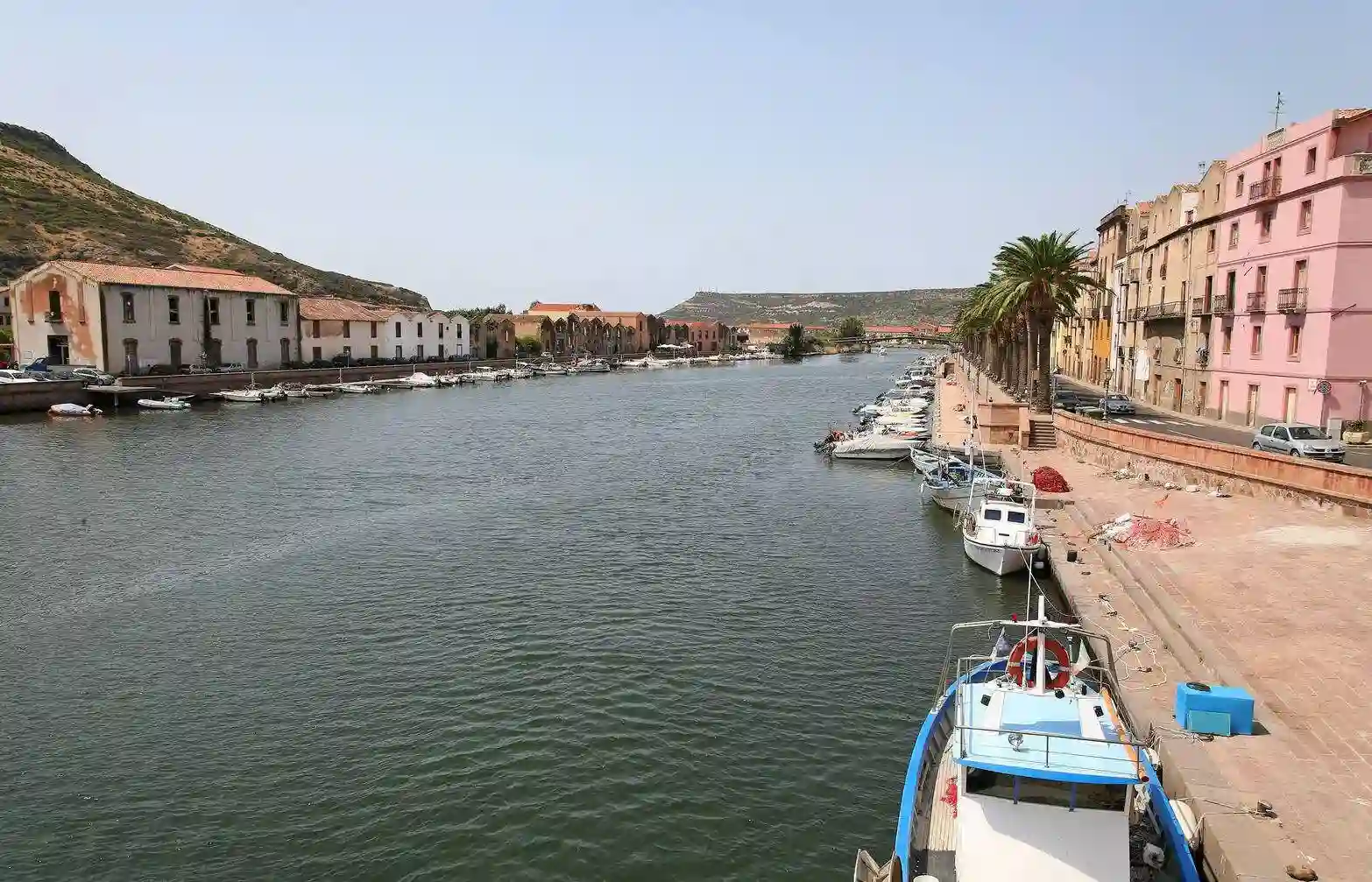
The Bosa marina appeared in our sight almost at the mouth of the Temo river, this area once being the cradle of the ancient settlement.
Today, you can find a sandy beach here, seemingly guarded by a watchtower, defensive walls, a lighthouse, with hotels, restaurants, and bars along the coast.
We stopped in one of the bars to catch our breath over a glass of Malvasia wine. Very good!
On our way back to the center, at one point, we came across a pizzeria that was open, which we hadn’t encountered much on that Sunday. Since we had been hungry for a while, we entered without hesitation.
Ristorante Pizzeria da Muà was the place that appeared in front of us just when we were in dire need of a place to eat. I remember we didn’t want pizza, but ordered a platter for two, the house specialty named fregola pescatora, consisting of seafood in sauce and a type of couscous, a delight!
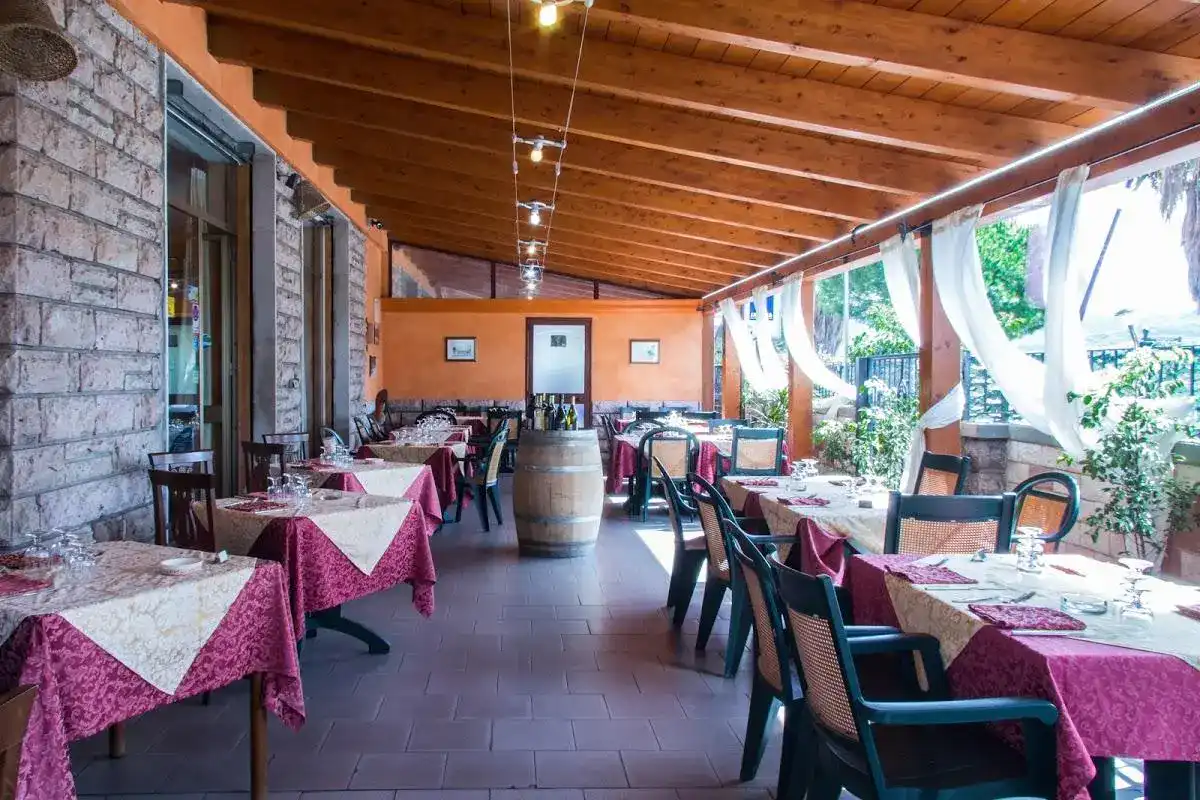
For drink, we took dry white wine, served in a half-liter carafe. The bill, including a cover charge of €2.5 per person, exceeded €50, but one does not go to Bosa every day!
With our stomachs content, we headed back towards the center, eager to stroll through the streets among colorful houses, as we still had some time left.
On the way, we passed through Piazza IV Novembre, a wide open space with a monument in the middle dedicated to Sardinian heroes who fell in duty during wars.
From one corner of the square, in the summer season, a tourist train departs at hourly intervals on a route that covers the core of the town, but also reaches Cattedrale di San Pietro Extramuros, the former cathedral of the town now located two kilometers upstream, an architectural gem in Romanesque style.
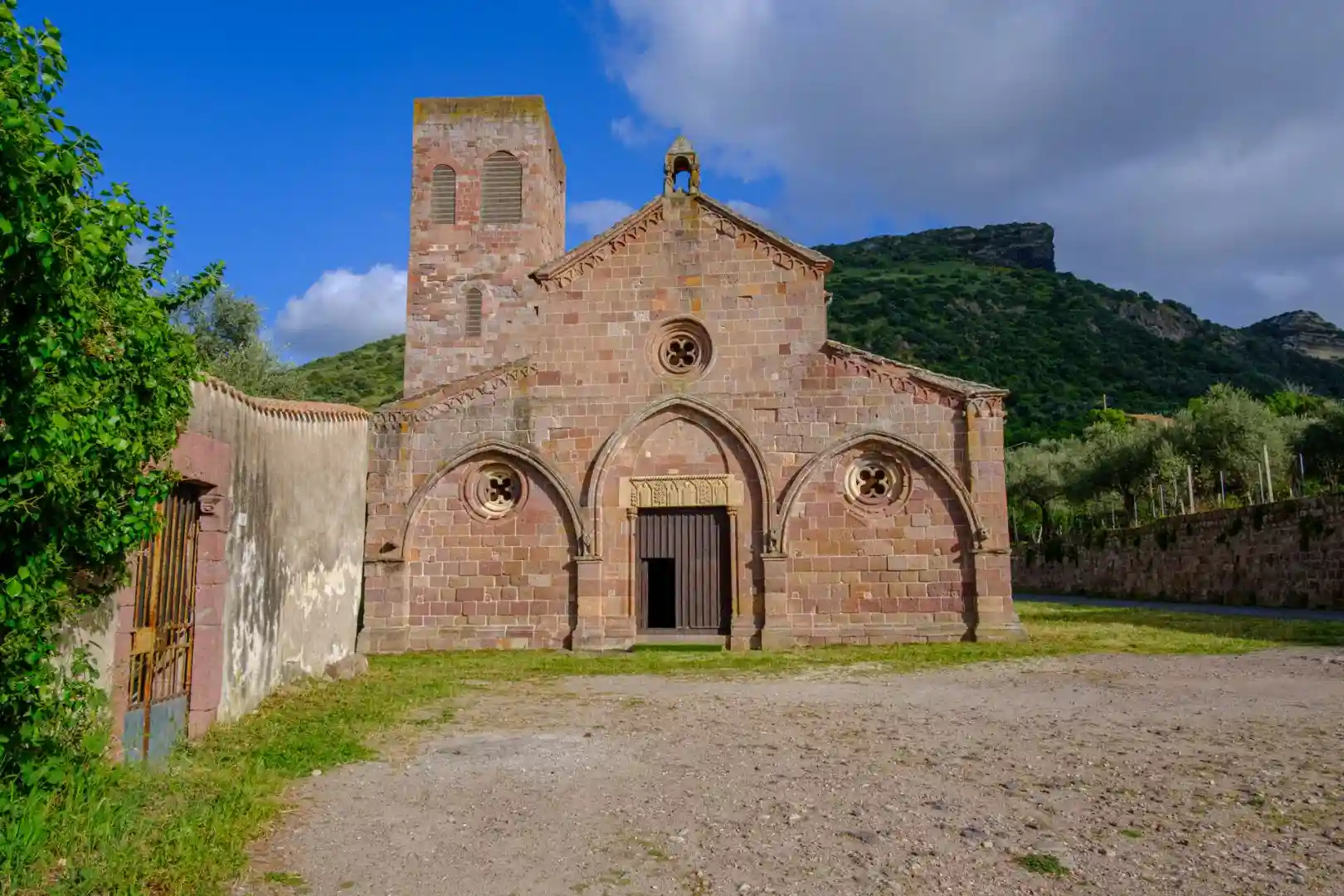
From Piazza IV Novembre, we emerged onto Corso Vittorio Emanuele II, considered the main street of Bosa, running through the center where the wealthy bourgeoisie had their villas, which can still be admired today.
A bit further, we found ourselves in Piazza Costituzione, the most lively square in the old town, with its central fountain and the elegant buildings surrounding it: restaurants and cafes with their outdoor terraces where one can dine al fresco in the heart of the historic center.
Just a stone’s throw away, on the other side of Corso Vittorio Emanuele II, we see Casa Museo Deriu, a villa with beautifully arranged spaces that preserve original furniture, paintings, and decorations of a prominent family from the city (€4.50 per person).
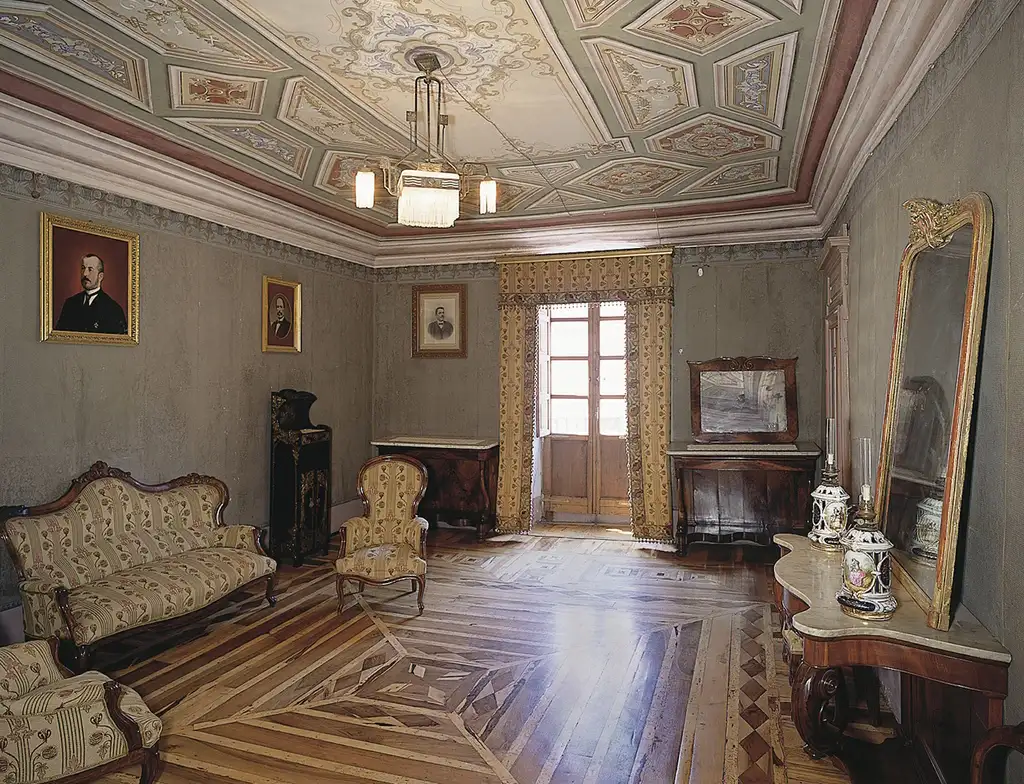
As the departure time from Bosa was approaching, leisurely, through other charming streets with a medieval atmosphere, we made our way on foot back to the same Piazza Vincenzo Gioberti, the place from where our bus to Alghero was supposed to pick us up.
As if by design, a few minutes before the bus arrived, it started to rain, and we were grateful that until then, it had allowed us to go about our business in Bosa.
Conclusion
The day spent in Bosa, although in the cold season, after a weather phenomenon that disrupted the entire island, was very pleasant. The town proved to be a relaxed and relaxing place at the same time, brimming with a medieval air.
Bosa is actually one of the most beautiful villages in Italy, both for the history it has preserved for millennia and for that delicate blend of history, art, culture, ancient traditions, and almost unaltered nature.
If you find yourself in Sardinia, make time for a tour through Bosa; you’re sure to find something to your taste.
Thank you for reading and make sure to subscribe. We're constantly exploring new destinations and share our stories, tips, and the beauty we discover along the way.



